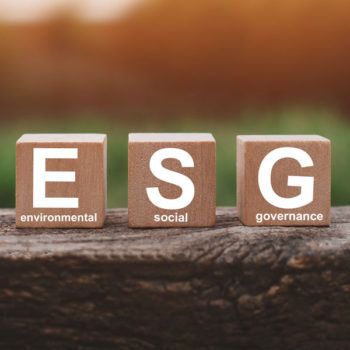|
|
As we stand on the threshold of the future and peer into the horizon beyond, the importance of sustainability has never been more apparent. In ‘The Top Trends,’ we delve into sustainability’s dynamic and evolving landscape, uncovering the key trends to define our future.”
From accelerating renewable energy adoption to embracing circular economies, sustainable supply chains, regenerative agriculture, and cutting-edge eco-conscious technologies, these trends are not mere trends – they are the building blocks of a more equitable, resilient, and sustainable world.
Join us as we explore these transformative forces shaping the path toward a greener, brighter tomorrow.
What Is the Importance of Sustainability in Business?
The importance of sustainability in business cannot be overstated, as it has become a defining factor in today’s corporate landscape. Companies across various industries are recognizing the multifaceted benefits of embracing sustainability practices. Let’s delve into some key aspects that highlight the significance of sustainability in the business world:
- Risk Mitigation: Sustainability initiatives help businesses mitigate risks associated with climate change and environmental disruptions. For example, companies that rely on agricultural supply chains are vulnerable to climate-related supply chain failures.
By adopting sustainable farming practices and supporting resilient agricultural communities, they can safeguard their supply chains against such risks.
- Cost Reduction: Sustainable practices often lead to cost reductions in the long run. For instance, investing in energy-efficient technologies reduces carbon emissions and lowers energy bills. Companies can redirect these cost savings towards innovation and growth.
- Market Competitiveness: Sustainability is a key driver of market competitiveness. Consumers increasingly make choices based on a company’s environmental and social commitments. Businesses demonstrating sustainability efforts can gain a competitive edge and capture a larger market share.
- Regulatory Compliance: Governments worldwide are imposing stricter environmental regulations. Businesses that proactively adhere to these regulations avoid legal penalties and position themselves as responsible corporate citizens.
For instance,Multinational companies headquartered in countries with tougher environmental policies tend to locate their polluting factories in countries with more lax regulations, a new study finds.
While countries may hope their regulations will reduce emissions of carbon dioxide and other greenhouse gases, these results show that these policies can lead to ‘carbon leakage’ to other nations.
- Access to Capital: Sustainable businesses often find it easier to attract investors and secure funding. Many investors integrate ESG or environmental, social, and governance criteria into their investment decisions. By aligning with ESG principles, companies can access a broader pool of capital.
- Positive Brand Image: Sustainability initiatives enhance a company’s brand image and reputation. When businesses engage in activities that promote social and environmental well-being, they build trust and goodwill among customers and stakeholders.
- Innovation and Resilience: Sustainability encourages innovation by fostering a culture of continuous improvement. Sustainable practices drive companies to explore new technologies and methodologies, making them more adaptable and resilient in changing market dynamics.
- Long-Term Viability: Ultimately, sustainability is about ensuring the long-term viability of both businesses and the planet. As businesses acknowledge their role in addressing global challenges, they become part of the solution, contributing to a more sustainable future.
How Can Businesses Achieve Net Zero Emissions?
Achieving net zero emissions is a crucial target for businesses looking to combat climate change and contribute to a sustainable future. This involves reducing greenhouse gas emissions to the point where carbon removal technologies or offsetting measures balance any remaining emissions.
Speaker Susanna Hasenoehrl simplifies carbon footprints, distinguishing between Scope 1, 2, and 3 emissions. Scope 1 and 2 are tied to operational activities, like using a production facility, and can be controlled by shifts to renewable energy. Scope 3 involves indirect emissions linked to product and service use, forming a significant part of a company’s carbon footprint.
Pukka, a Unilever brand, highlights that 49% of their emissions come from boiling a kettle, an example of Scope 3. Measuring Scope 3, including waste, supply chain, and travel emissions, can be challenging. When reviewing a company’s carbon disclosure, inquire about all three scopes.
Adopting New Energy-Efficient Technologies
One strategy to achieve net zero emissions is by adopting new energy-efficient technologies. Businesses can invest in renewable energy sources such as solar or wind power, implement energy-saving measures, and optimize their energy consumption.
Companies can significantly reduce their carbon footprint and contribute to a more sustainable energy future by reducing their reliance on fossil fuels.
Integrating Clean Energy Sources Into Operations
Integrating clean energy sources into business operations is another approach to achieving net zero emissions. This can involve installing on-site solar panels, utilizing geothermal energy, or purchasing renewable energy from external sources.
By transitioning to clean energy, companies can reduce their carbon emissions, benefit from long-term cost savings, and promote a greener economy.
Reducing Carbon Footprint Through Innovative Practices
In addition to adopting energy-efficient technologies and clean energy sources, businesses can also reduce their carbon footprint through innovative practices.
This can include implementing circular economy principles, optimizing transportation and logistics, promoting remote work to reduce commute emissions, and investing in more sustainable packaging and waste management solutions.
By thinking creatively and taking a holistic approach, companies can make significant progress towards achieving net zero emissions.
What Are the Key Sustainability Trends?
Several key sustainability trends are expected to shape the business landscape. These trends are driven by a growing recognition of the urgent need to address environmental and social challenges and create a more sustainable future for all.
- Climate Action and Carbon Neutrality: More companies commit to achieving carbon neutrality by reducing emissions and investing in carbon offset projects. This trend is driven by increasing awareness of climate change and the need for businesses to take action.
- Circular Economy: The circular economy model, which focuses on reducing waste and maximizing resource use, continues to gain traction. Businesses are exploring ways to design products for longevity, reuse, and recycling.
- Renewable Energy Transition: The transition to renewable energy sources like solar and wind power is accelerating. Many organizations are setting targets to run on 100% renewable energy, reducing their reliance on fossil fuels.
- Sustainable Supply Chains: Companies increasingly scrutinize their supply chains for environmental and social impacts. Ethical sourcing, responsible mining, and sustainable agriculture practices are becoming more prevalent.
- Biodiversity Conservation: Biodiversity is a growing concern, and businesses are taking steps to protect and restore ecosystems. This includes supporting reforestation projects, protecting natural habitats, and reducing the use of harmful chemicals.
- Social Equity and Inclusion: Social sustainability is gaining prominence, focusing on diversity, equity, and inclusion in the workplace. Companies are implementing policies to promote workforce diversity and equitable opportunities.
- Sustainable Finance: Sustainable finance, including green bonds and impact investing, is becoming mainstream. Investors increasingly seek companies with strong ESG (Environmental, Social, and Governance) performance.
- Transparency and Reporting: Transparency in reporting environmental and social performance is on the rise. Regulations and consumer demand are pushing companies to disclose more information about their sustainability practices.
- Water Stewardship: Concerns over water scarcity and quality are driving businesses to adopt water-efficient practices and engage in water stewardship initiatives.
- Circular Fashion: In the fashion industry, circular fashion concepts, such as clothing rental and upcycling, are becoming more popular as a way to reduce textile waste.
These sustainability trends reflect a growing recognition of the need for businesses to operate in ways that benefit both society and the environment. Companies that embrace these trends are better positioned to meet evolving consumer expectations, reduce risks, and contribute to a more sustainable future.
Embracing Environmental, Social, and Governance (ESG) Practices
Environmental, Social, and Governance (ESG) practices are gaining prominence as companies recognize the importance of integrating sustainability considerations into their decision-making processes.
ESG factors encompass various issues, including climate change, resource efficiency, labor rights, diversity and inclusion, and corporate governance. By embracing ESG practices, businesses can create value, enhance resilience, and build stakeholder trust.
Example: Companies increasingly commit to reducing their carbon footprint and achieving net-zero emissions. This includes setting science-based targets, transitioning to renewable energy sources, and implementing sustainable supply chain practices. By doing so, they align with global efforts to combat climate change.
Enhancing Social Sustainability Initiatives

In addition to environmental sustainability, businesses are increasingly focusing on enhancing their social sustainability initiatives. This involves addressing social inequalities, promoting diversity and inclusion, and improving community engagement. Companies can foster a more equitable and sustainable future by actively contributing to the well-being of employees, local communities, and society.
Example: Businesses recognize the importance of diversity, equity, and inclusion (DEI) in their workplaces. They are implementing policies to promote a diverse workforce, equitable opportunities, and inclusive company cultures. Initiatives like mentorship programs and diversity training are becoming standard practices.
Implementing New Sustainability Disclosure Requirements
With the growing emphasis on transparency and accountability, new sustainability disclosure requirements are expected to emerge.
These requirements may include mandatory reporting of sustainability metrics, increased scrutiny of supply chain practices, and disclosure of climate-related risks and opportunities.
By adhering to these standards, businesses can demonstrate their commitment to sustainability and build trust with investors, regulators, and other stakeholders.
Example: Regulatory bodies are introducing more stringent reporting requirements related to sustainability. For instance, the Task Force on Climate-related Financial Disclosures (TCFD) framework is gaining traction, requiring companies to disclose climate-related risks and opportunities.
Companies proactively adopt these standards to communicate their commitment to climate change.
How Can Businesses Accelerate Their Sustainability Efforts?

Accelerating sustainability efforts is crucial to meet the ambitious goals of 2030 and beyond. Businesses must proactively identify opportunities, collaborate with stakeholders, and continually improve their sustainability performance.
Collaborating With Suppliers to Achieve Sustainability Goals
Collaborating with suppliers is essential for businesses to achieve their sustainability goals. By working together, companies and suppliers can share best practices, identify areas for improvement, and drive positive change throughout the supply chain.
This collaboration can lead to more sustainable sourcing, reduced waste, and increased efficiency, ultimately benefiting both the business and the environment.
Example: A multinational clothing retailer collaborates closely with its textile suppliers to promote sustainability. They work together to reduce water usage in fabric dyeing processes, minimize waste, and implement ethical labor practices. By sharing knowledge and resources, the retailer and its suppliers collectively reduce their products’ environmental and social impact.
Incorporating Innovative Business Models for Sustainable Growth
To accelerate sustainability efforts, businesses should consider incorporating innovative business models that promote sustainable growth. This may involve adopting a circular economy approach, exploring new revenue streams based on sustainable products or services, or pursuing partnerships facilitating resource sharing and collaboration. By embracing innovation, companies can create value while minimizing their environmental impact.
Example: A technology company transitions to a product-as-a-service model, where customers pay for the use of their software rather than purchasing a physical product.
This shift encourages longer product lifecycles, reduces electronic waste, and incentivizes the company to design efficient and eco-friendly software. The company reduces its carbon footprint and opens up new revenue streams.
Investing in Energy Efficiency Measures
Energy efficiency is a crucial area where businesses can accelerate their sustainability efforts. By investing in energy-efficient technologies, optimizing processes, and promoting behaviour change among employees, companies can significantly reduce their energy consumption and associated carbon emissions.
Energy efficiency measures not only contribute to environmental sustainability but can also result in cost savings and improved competitiveness.
Example: An industrial manufacturing plant invests in energy-efficient equipment, LED lighting, and employee training programs focused on energy conservation. These efforts result in a significant reduction in energy consumption and operational costs.
The plant also automatically installs sensors to adjust heating and cooling systems based on occupancy, further optimizing energy usage.
What Is the Future of Sustainability Reporting?
Sustainability reporting has become vital for businesses to communicate their environmental, social, and governance performance to stakeholders. As we look ahead, several trends will likely shape the evolution of sustainability reporting practices.
Addressing Scope 3 Emissions in Reporting

Image Credit: Climate Action Navigator
Scope 3 emissions, which include indirect emissions generated throughout a company’s value chain, are gaining increased attention in sustainability reporting. Businesses are recognizing the need to track and disclose these emissions to gain a holistic view of their environmental impact and identify opportunities for improvement.
Reporting scope 3 emissions can prompt businesses to collaborate with suppliers, explore alternative transportation methods, and optimize distribution networks to reduce their carbon footprint.
Tracking and Reducing Carbon Emissions Across the Supply Chain
In line with the focus on supply chain sustainability, future sustainability reporting will likely include a comprehensive assessment of carbon emissions across the entire supply chain. This requires businesses to track and report raw material extraction, production, transportation, and end-of-life disposal emissions.
By understanding the carbon footprint of their supply chain, companies can identify hotspots, implement targeted reduction measures, and foster more sustainable sourcing practices.
Utilizing Advanced Technology for Accurate Sustainability Data
Advanced technology, such as artificial intelligence and blockchain, is expected to play a significant role in the future of sustainability reporting. These technologies provide opportunities to automate data collection, enhance accuracy and reliability, and enable real-time reporting.
By leveraging technology, businesses can streamline their reporting processes, gain deeper insights into their sustainability performance, and make data-driven decisions to drive continuous improvement.
Frequently Asked Questions
The sustainability trends shapin include sustainable business practices, supply chain sustainability, social sustainability, new sustainability strategies, and energy efficiency.
A sustainable business is a business model that considers its operations’ environmental, social, and economic impacts, aiming to minimize its harmful effects and promote long-term sustainability.
Supply chain sustainability focuses on integrating environmental, social, and economic considerations into every stage of the supply chain. This approach helps reduce negative environmental impacts, improve working conditions, and promote ethical sourcing.
Social sustainability refers to the ability of a society to meet the needs of its current and future generations while improving the well-being of individuals and communities, promoting social justice, and respecting human rights.
Businesses can develop a sustainable strategy by identifying their environmental and social impacts, setting goals to address these impacts, implementing sustainable practices, and regularly monitoring and reporting their progress.
The new sustainability trends that will drive the agenda include the global biodiversity framework, impacts of climate change, sustainable finance disclosure regulation, sustainability reporting standards, and the achievement of sustainable development goals.
Sustainability and ESG (Environmental, Social, and Governance) considerations are increasingly important for businesses. They help mitigate risks, drive innovation, attract responsible investors, enhance reputation, and create long-term value.
Sustainability trends provide valuable insights and guidance for businesses to align their corporate sustainability commitments with emerging environmental, social, and governance challenges and opportunities.
Business leaders can integrate sustainability into their business models by incorporating sustainable practices, investing in renewable energy, promoting circular economy principles, engaging stakeholders, and continuously improving sustainability performance.
Global events like the war in Ukraine and global energy challenges can significantly impact sustainability. They may disrupt supply chains, influence energy prices, affect food security, and necessitate adjustments to sustainable development strategies.
Conclusion
In conclusion, it’s clear that sustainability is no longer just a buzzword; it’s a driving force reshaping our world. The top sustainability trends we’ve explored—ranging from the push for renewable energy and circular economies to the emphasis on sustainable supply chains, regenerative agriculture, and eco-conscious technology—are poised to leave a lasting impact on our planet and its inhabitants.
These trends signify a collective commitment to forging a more sustainable, equitable, and resilient future. They demonstrate that individuals, businesses, and governments worldwide recognize the urgency of addressing environmental and social challenges.
By adopting these trends and weaving sustainability into the fabric of our societies, we pave the way for a brighter and more sustainable tomorrow, where the well-being of our planet and its people takes precedence. As we navigate the path ahead, let us remain steadfast in our dedication to these trends, as they hold the keys to a more harmonious coexistence with our planet and a better quality of life for all.












